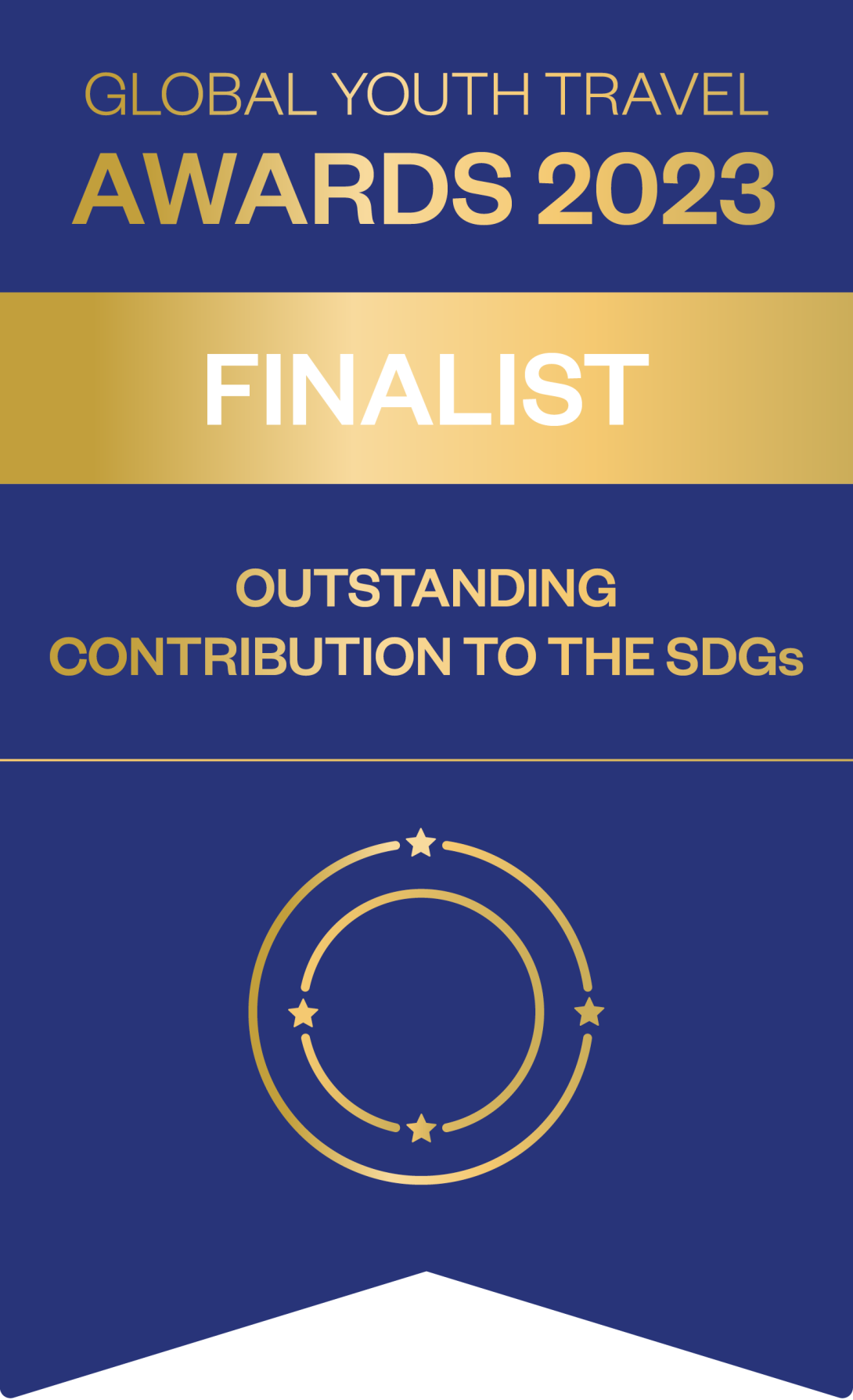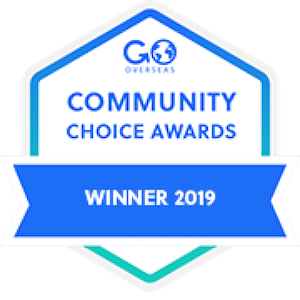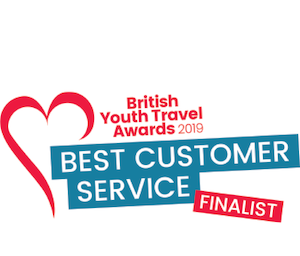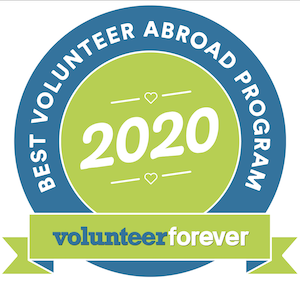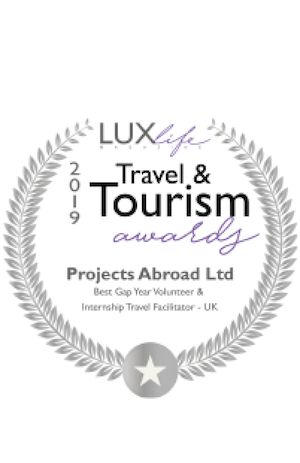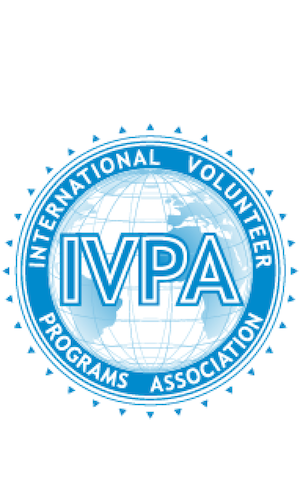Here at Projects Abroad we love to share the stories of our volunteers. Read below to see part three of Sara's year long adventure. Or if you've missed it, check out part one here. She travelled with Projects Abroad for almost an entire year in 2019 and 2020. Sara joined a variety of projects in Mexico, Peru, Sri Lanka, Thailand and Cambodia!
Thailand

So, from the serenity of teaching in a Buddhist Temple school I flew from Colombo to Krabi, Thailand. It was 8 December 2019 and I would be staying in a resort, learning to dive and then joining a conservation project to help restore the coral reefs. It was this project that had begun the whole idea of me taking an OgAP (old age pensioners gap year!), blue seas, sunshine, golden beaches and the great experience of learning to scuba dive.
I was collected from the airport and taken to the Projects Abroad resort where I would be staying for the next eight weeks. It was a pleasant change to be driving on roads without potholes and to be in a lively but less chaotic atmosphere than Panadura in Sri Lanka. The resort was made up of cabins surrounding the swimming pool and landscaped with palm trees and flowering shrubs. A large bungalow housing the kitchen and communal area stood at the front of the property, and it was there that I met the girls who were to be my room mates. I was a little concerned about sharing accommodation at first but both girls were so welcoming and supportive, I realised it was far better to be immersed in the group.
Learning to dive

I started my dive training at the same time as two of the High School volunteers, we were equipped with mask, fins, wetsuits, buoyancy jacket, regulator, a huge numbered bag to keep everything in, a dive watch and the PADI book with DVD’s. This sudden change from teacher to student was a bit of a shock for me. PADI training is short and intense, and there is a lot to learn. I hadn’t really appreciated that the whole object was to get us all certified and diving as quickly as possible.
After the training day in the swimming pool, where I was absolutely fine, my first sea dive was a very different experience. We’d joined the dive boat and sailed for over an hour to the chosen island site, everyone got their gear ready and one by one jumped into the water and disappeared. I was left with my instructor, he in the water and me teetering on the edge of the boat plucking up courage to jump into the navy blue swell of water – this was not what I was expecting; I thought I would be diving in calm, clear, turquoise water as borne out by all the photos I’d seen previously!! However, I duly took the leap of faith.
This experience was not one of my better ones. I barely had the strength to climb the ladder, the boat was bobbing up and down, the tank on my back was pulling me backwards and I was just ready to cry. Various nods and shakes of head passed between Frank and the crew indicating that I was going to be a nervous diver. We stored our equipment and went on deck to relax and warm up in the hot sun. I was reassured that all would be well and that I now had an hour or so before we went to the next site. Oh my god that was the last thing I wanted to hear, I had to dive again, eek!
20 minutes or so later some of the other volunteers popped up and made their way back onto the boat. They took refreshments, fruits and hot drinks and chatted, filling in their dive record books and asking me how I’d done. Everyone was very supportive and said I’d get the hang of it very quickly, just trust Frank and listen to what he told me. The engines revved and we moved on to our second dive site, this was sheltered by the high rocks of the island, the water was calmer and I could actually see the seabed. I managed a depth of 6 metres for about 6 minutes before I felt water in my mouth and panicked. Back on board and time to do the first of the theory tests – 80%, 90%, 100% and 100% - hmm, time for more revision.
The PADI course is thorough, vital and a good basic safety grounding – you have to be able to fill and empty your mask with water, remove and replace your mask, remove and retrieve your regulator (breathing tube), use, or assist your buddy to use, the spare regulator each diver carries and blow up the marker buoy. The dive watch is a mystery until you get into the water, it basically keeps you alive in that it tells you how much air is in the tank, when to slow your ascent and the depth of your dive – the very worrying thing is, it doesn’t start to work until you are under water!! Not great for the confidence on one’s first dive but extraordinary how quickly you completely trust and rely on its information.
My main problem was controlling my buoyancy but like most things once I properly relaxed all was fine. It is a fabulous experience to be surrounded by a shoal of colourful fish, all swimming around you as if you are one of them. Seeing the different corals in their subtle colours and beautiful shapes, and then so devastating to find huge swathes of them bleached white in their death. To be part of this programme to help restore new life is really an honour.
Our work

We dived three times a week and each outing we completed a new task, gathering rocks from the sea bed that were then used to attach coral fragments, gathering data of fish and coral types, spotting the types of fish living around the reefs and very importantly gathering any rubbish – fishing lines and net, plastic bags and bottles.
Re-establishing the reef is a long process and the “nursery” that we were helping to build was to take at least two years of monitoring before the rocks could be moved and added to a thriving colony. Little pieces of broken live corals, found on the sea bed, were bonded with a special solution to the rocks we had already gathered and then carefully placed in the nursery. This required great team work as divers collected rocks whilst the volunteers on deck “glued” the corals in place. Completed pieces then were returned to the nursery. All the data was recorded and then uploaded to the central site which is gathering information to assess the damage caused by climate change world-wide and the effectiveness of programmes like these.
When we weren’t diving there were land-based jobs to be done. Gathering cigarette butts off the tourist beach – yuk! Sounds horrid, doesn’t it? … but again, the sense of achievement after an hour to discover between the ten of us. We had collected around 10,000 butts along the 1 kilometre stretch of beach we were cleaning, and talked to people curious to know what, and why, we were doing this. The fibres in the filter are not the soft fluffy things they look and do not break down in the sand or sea, but do get eaten by fish. Another day one of the marine biologists, running our project, bought a selection of different fish from the local market for us to dissect - in each and every one of the 12 sample fish, we found micro plastics!

Severe storms had hit the coastline a few years before and swept away the sea defences protecting the peninsula, young mangrove trees uprooted too. So, another of our tasks was to move and replant new trees. This is incredibly laborious work and takes hours. Soft, thick mud has to be tickled away from the roots which are long, delicate and snap easily. If the root structure is damaged the tree will die, it is hot despite a dawn start and there is no shelter. Groups of 4 or 5 volunteers worked on each tree which took roughly three hours to dig up and replant. I have to say it felt a futile task, but once the end result is seen, you know a difference is being made. New volunteers are joining each week and by the end of a year or so, a full stretch of mangroves will be calming the sea currents and providing shelter and breeding grounds for fish and birds alike. Very satisfying.

Then a change of pace, another early start as we are taken to Phuket to help in the Marine Ecological Research Centre. There, research and a turtle survey is being collated. Vast tanks of green, leatherback and hawksbill turtles are being cared for, ready for release back into the sea once they have reached a size that gives them a good chance of survival. We were to get into the tanks to clean the walls and floors – a bit smelly and quite hard work but great fun too.
Weekends and evenings are free time, there are many splendid temples to visit, most of which appear to have been built on top of mountains. The climb of several hundred steps is worth it when on reaching the top you are greeted by a huge golden buddha and breath-taking views across the countryside.
At night there are plenty of markets, cafes, bars and shops to explore, or stay in the resort playing cards, chatting and watching films. There is something very endearing about sitting with a group of young adults watching Disney, experiencing the same wonder as we all did as children.
However, eight of the twelve weeks I had planned in Thailand was coming to a close, I had to leave for at least 24 hours to meet visa requirements, so rather than go to the expense of leaving for a day, I had decided to go onto my next project and return for the last month to complete my volunteering year.
Next stop Cambodia and a Public Health Project in Phnom Penh.
Sara went on to volunteer in Cambodia, where she joined a Public Health and Khmer Culture Project!
Check out Part 5 of Sara's story here!
This is a personal account of one volunteer’s experience on the project and is a snapshot in time. Your experience may be different, as our projects are constantly adapting to local needs and building on accomplishments. Seasonal weather changes can also have a big impact. To find out more about what you can expect from this project we encourage you to speak to one of our friendly staff.
Our accreditations


